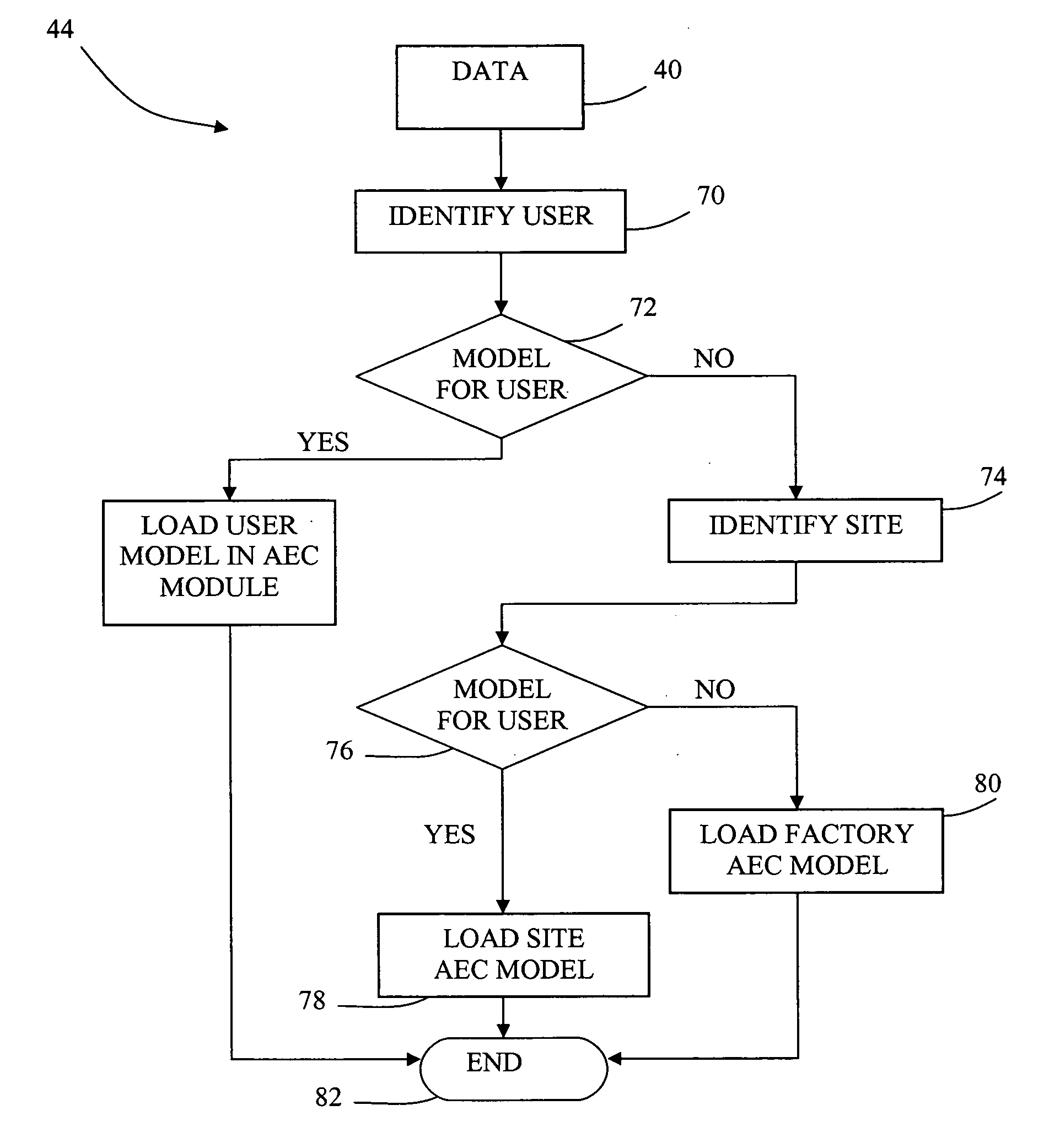System and method for adaptive automatic error correction
a technology of automatic error correction and automatic speech recognition, applied in the field of automatic speech recognition system and automatic error correction, can solve the problems of repetitiveness of many letters, prone to errors in speech recognition systems, and repeating many errors in speech recognition processes
- Summary
- Abstract
- Description
- Claims
- Application Information
AI Technical Summary
Benefits of technology
Problems solved by technology
Method used
Image
Examples
Embodiment Construction
[0025] The present invention will now be described more fully as it applies to all embodiments. The present invention relates to a method of automatic speech recognition (ASR) for automatically detecting and correcting frequently repeated errors and mismatches. The present invention also relates to an ASR system having improved automatic error and mismatch correction (AEC) capabilities for implementing the method of speech recognition. The system of the present invention is capable of operating on conventional computer systems and computerized devices, an example of which is provided below as it relates to the preferred embodiment.
[0026] The ASR system of the present invention may be used to correct errors in strings of interpreted speech. It may also be used to correct string mismatches between interpreted speech and desired finished written reports. Additionally, this system identifies and selects candidate errors and mismatches between the output of the ASR system and final, edi...
PUM
 Login to View More
Login to View More Abstract
Description
Claims
Application Information
 Login to View More
Login to View More - R&D
- Intellectual Property
- Life Sciences
- Materials
- Tech Scout
- Unparalleled Data Quality
- Higher Quality Content
- 60% Fewer Hallucinations
Browse by: Latest US Patents, China's latest patents, Technical Efficacy Thesaurus, Application Domain, Technology Topic, Popular Technical Reports.
© 2025 PatSnap. All rights reserved.Legal|Privacy policy|Modern Slavery Act Transparency Statement|Sitemap|About US| Contact US: help@patsnap.com



